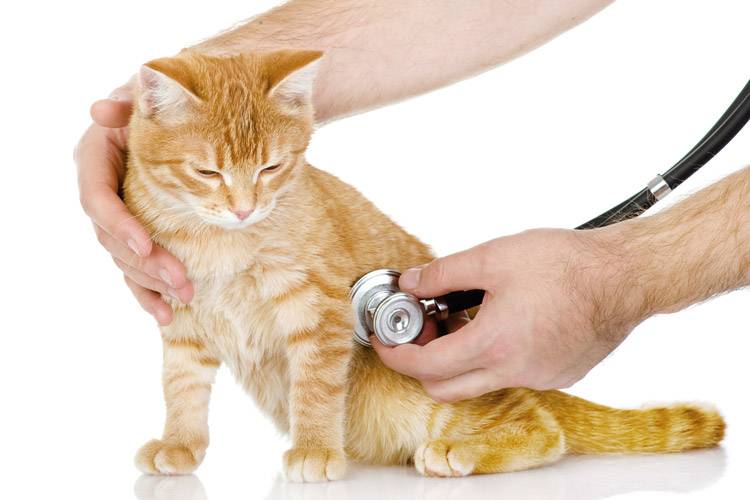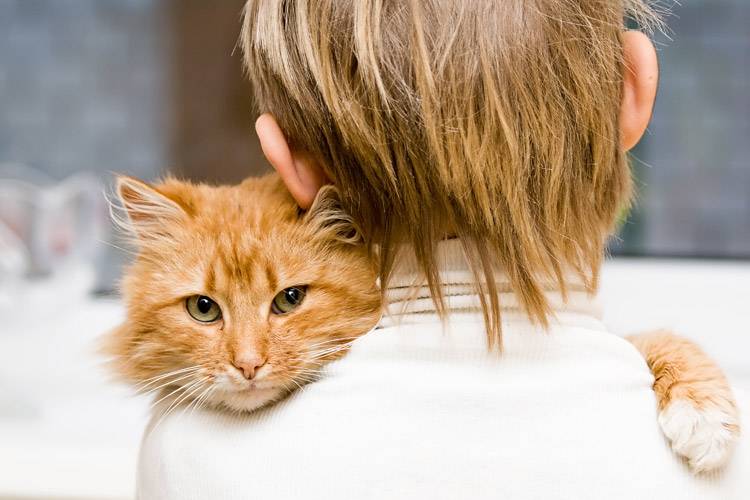What’s wrong with my cat?
Detecting diseases in cats is a little more complicated than in dogs. However, there are unmistakable signs that indicate that something is wrong with your cat, like lack of appetite or losing a lot of hair. Below, we are going to discuss the most common diseases and their symptoms.
pets
Share

Although cats are 'more independent' than dogs, they also need, in addition to food, water and an adequate space, us to monitor their health so that they can continue to give us affection for many years. This means taking them to the vet to vaccinate them at least once a year and deworming them every 3 months.
Loss of appetite, excessive hair loss, bald spots anddroopy ears are all symptoms that your cat is not well.
THE MOST DANGEROUS ILLNESSES AND VACCINATIONS
1. Its first vaccination: before the cat is two months old. This is called Trivalent (or Triple Feline) and protects it from the following diseases:
- Panleukopenia: A very contagious digestive disease that affects, particularly, kittens of 2-4 months. It is transmitted by direct contact, faeces or saliva and is found in stray cats. Symptoms: poor appetite, depression, fever, vomiting, bloody diarrhoea, dehydration, and brain damage.
- Calicivirus: severe respiratory disease. Kittens or cats from breeders are the most often affected. Contagion is produced by direct contact between cats, but also through beds, cages and feeders. Symptoms: lack of appetite; fever; mucus; conjunctivitis; pus around the eyes; mouth, palate and nose ulcers.
- Rhinotracheitis (feline flu): respiratory disease of the upper airways, common in environments with a high concentration of cats. It is transmitted by direct contact or by saliva. Symptoms: scabs in the area of the eyes and nose, cough, fever, sneezing and loss of appetite. Breeds with short noses, such as Persians, are more likely to have this disease.
2. Vaccine against leukaemia: After the cat is 3 months old. It affects uncastrated males, cats that go outside and those that are in contact with other cats. Sometimes it is deadly, especially for kittens. It is transmitted through the saliva and bites from other cats. Symptoms: sometimes there are no symptoms for a lengthy period after infection, but the most frequent are anaemia, liver or intestinal disease, immunological problems and the formation of tumours.
3. The second vaccination: Between 2.5 and 3 months of age, the cat should get a second Trivalent vaccine (a booster), and between 3 and 3.5 months, the second vaccine against Leukaemia.
4. Vaccine against Feline Infectious Peritonitis (PIF): from 4 months of age, and repeated every month. This is a very serious and deadly disease, almost impossible to detect. It is transmitted by contact with other affected cats and the use of common feeders and litter boxes. Symptoms: weight loss, swelling of the abdomen, apathy, intermittent fever, lack of appetite or inflammation of the internal organs. It is the only vaccine given intranasally.
5. Anti-Rabies Vaccine: at 5-6 months, when the vet indicates, as it is not mandatory. It is an incurable, deadly disease and can be transmitted to man. It is produced by biting or contact of infected saliva with wounds. Symptoms: paralysis of the muscles of the throat and cheeks causing difficulty eating, drinking and a strange expression of the face, with abundant drooling.

SYMPTOMS TO KEEP AN EYE OUT FOR
• Behaviour changes, such as urinating outside its tray, on soft surfaces (sofa, bed, towels, etc.): these can be a symptom of a urine infection or kidney disease.
• If the cat stops 'washing' and, therefore, has dirty, thick, dull hair. If he has dandruff, he may get bald spots, or if his hair falls off, it can be a sign of poor nutrition, parasites or excessive heat.
• Loss of appetite.
• Urinary problems and diarrhoea: symptom of infections or parasites.
• Black spots inside the ears or with wax: infection problems or mites in the ears. Another symptom is one or both of the ears drooping.
• Cough: it may be an allergy, parasites or infections such as pharyngitis or heart problems. It can also be asthma.
• Sneezing, nasal and ocular secretions: it can be by allergy or, if it persists, by a virus. Rheumy eyes are normal in Persians, but should be black, with an abnormal one being white-yellowish or green.
• Scratching or excessive licking: symptom of an allergy or external parasites.
HOW TO FIND OUT IF YOUR CAT HAS A TEMPERATURE
The average temperature of an adult cat is between 38-39°C. A symptom ofa temperature is that its nose is parched rather than moist, it is apatheticand sleeping excessively, with heavy, irritated eyes. However, if in doubt,there is only one way to be sure: take the temperature rectally






